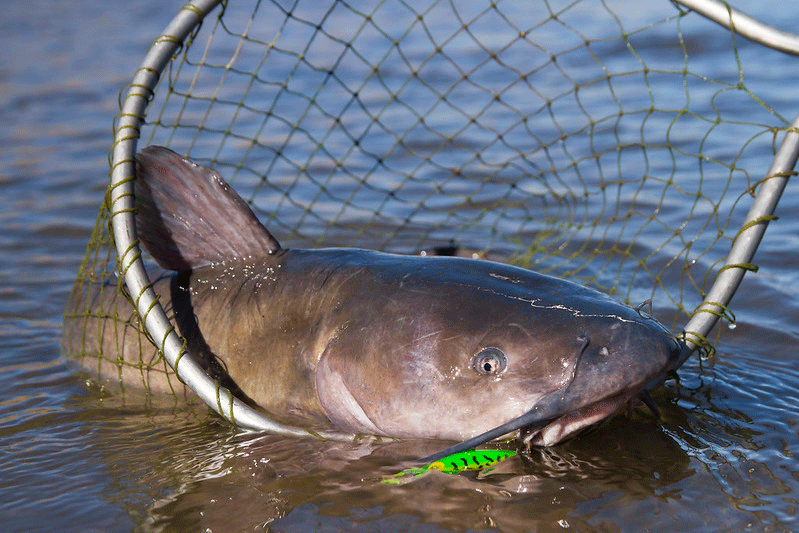The Ultimate Guide to Missouri Catfish Fishing: Tips, Techniques, and Hotspots
Embark on an unforgettable Missouri catfish fishing adventure with our comprehensive guide. Learn the best techniques, tips, and locations to reel in some impressive catfish catches.
Table of Contents
- Introduction
- Missouri Catfish Species
- Top Catfish Fishing Locations in Missouri
- Best Catfish Fishing Techniques and Tips
- Essential Catfish Fishing Gear
- Missouri Catfish Fishing Regulations
- Conclusion
- FAQS
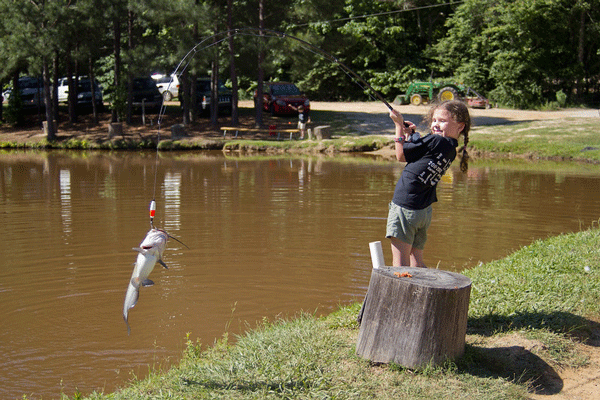
Introduction to Missouri Catfish
Welcome to the ultimate guide for catfish fishing in St Louis Missouri. Our mission is to provide you with the most comprehensive information on catfish fishing in the Show-Me State. Here, we’ll cover the primary species of catfish, top fishing locations, best techniques and tips, essential gear, and important regulations to ensure a successful and enjoyable fishing experience.
Missouri offers a diverse range of fishing opportunities, and catfish fishing is no exception. The state boasts numerous lakes, rivers, and reservoirs that are teeming with catfish, making it a prime destination for anglers seeking a thrilling and rewarding experience. In this guide, we aim to equip you with the knowledge and resources needed to make the most of your Missouri catfish fishing adventure, whether you’re a seasoned angler or a beginner looking to hone your skills.
As a rich and biodiverse state, Missouri is a haven for a variety of fish species. Among these, catfish are particularly popular among anglers due to their size, taste, and challenging nature. Through this guide, you will discover the types of catfish species native to Missouri, the optimal locations to find them, and the techniques and gear that will enable you to reel in impressive catches. Furthermore, we’ll outline important regulations and conservation practices to help you fish responsibly and contribute to the preservation of Missouri’s natural resources.
So, without further ado, let’s dive into the world of Missouri catfish fishing and uncover the secrets to a successful and memorable angling experience!
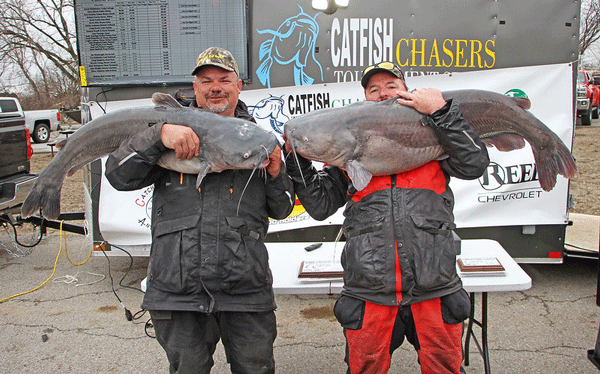
Missouri Catfish Species
Missouri is home to three main catfish species, each with their unique characteristics, habitats, and challenges for anglers. By understanding these differences, you’ll be better equipped to target and catch each species effectively.
1. Channel Catfish
Channel catfish are the most common and widespread species in Missouri. They can be found in nearly all bodies of water, from small streams to large reservoirs. Channel catfish typically weigh between 2 and 10 pounds, with larger specimens reaching up to 30 pounds. They have a distinctive forked tail and dark spots on their sides, which fade as the fish grows older.
These catfish prefer clear waters with moderate to swift currents and are often found near submerged logs, rocks, and vegetation. They are opportunistic feeders, consuming a variety of prey such as fish, insects, and crayfish. Channel catfish are known for their strong fighting abilities and make for an exciting catch for anglers.
2. Blue Catfish
Blue catfish are the largest catfish species in Missouri, with some trophy catches exceeding 100 pounds. They are characterized by their smooth, slate-blue body, forked tail, and humped back. Blue catfish inhabit large rivers and reservoirs with deep channels, often in areas with swift currents and sandy or rocky bottoms.
Blue catfish are primarily piscivorous, feeding on shad, herring, and other fish species. Due to their size and strength, blue catfish offer a formidable challenge for anglers, making them a popular target for trophy fishing.
3. Flathead Catfish
Flathead catfish, also known as “yellow cat” or “opelousas cat,” are another prominent species in Missouri. They are distinguishable by their broad, flattened head and mottled brown or yellow coloration. Flathead catfish typically weigh between 20 and 40 pounds, although they can grow much larger, with some specimens exceeding 100 pounds.
Flathead catfish prefer large rivers and reservoirs with slow-moving currents and are often found in deep pools, undercut banks, and near fallen trees or other submerged structures. They are predominantly nocturnal predators, feeding on live fish such as sunfish, shad, and smaller catfish.
Understanding the habitats, behavior, and feeding preferences of each catfish species will help you target them more effectively and increase your chances of a successful catch. Armed with this knowledge, you’ll be well-prepared to tackle Missouri’s diverse catfish fishing opportunities.
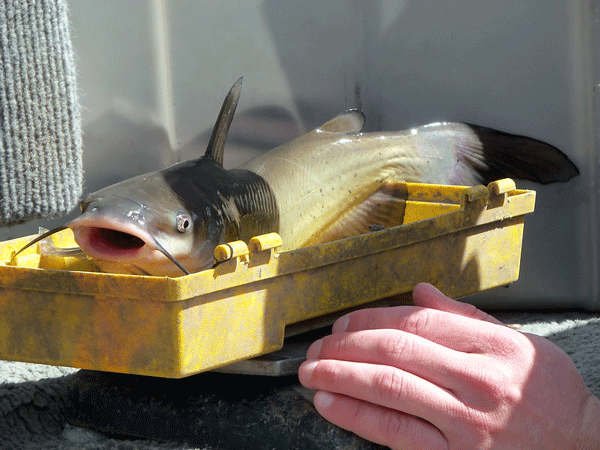
Top Catfish Fishing Locations in Missouri
Missouri offers a multitude of prime catfish fishing locations, with a variety of water bodies that cater to different catfish species. Below, we’ve compiled a list of some of the best spots for catfish fishing in the state.
1. Lake of the Ozarks
Lake of the Ozarks is a sprawling reservoir that spans over 54,000 acres and offers excellent catfish fishing opportunities. All three major catfish species can be found here, with channel catfish being the most abundant. The lake features numerous coves, submerged structures, and a diverse range of depths, making it an ideal habitat for catfish. Key fishing areas include the Gravois Arm, Osage River Arm, and Niangua River Arm.
2. Mississippi River
The mighty Mississippi River is home to impressive populations of blue and flathead catfish, as well as channel catfish. The river offers a range of fishing opportunities, from bank fishing to boat fishing. Key areas to target include wing dikes, deep holes, and river bends where catfish often seek shelter and food.
3. Truman Lake
Truman Lake, a 55,600-acre reservoir, is an excellent location for catfish anglers. The lake boasts healthy populations of channel, blue, and flathead catfish. Anglers can target the abundant submerged structures, creek channels, and flats that catfish inhabit. Notable fishing spots include the Grand River Arm, Osage River Arm, and the Pomme de Terre River Arm.
4. Missouri River
The Missouri River provides a vast habitat for all three primary catfish species, with blue and flathead catfish being particularly abundant in its deeper channels. Look for areas with significant current breaks, submerged trees, and sandbars, which are prime locations for catfish. The river offers diverse fishing experiences, from bank fishing in urban areas to secluded boat fishing in remote stretches.
5. Table Rock Lake
Table Rock Lake is a popular fishing destination, covering over 43,000 acres. While it’s primarily known for bass fishing, the lake also supports a healthy catfish population, especially channel catfish. Focus on fishing near submerged structures, creek mouths, and deep channels to increase your chances of success.
6. James River
The James River is a smaller tributary of the White River, but it offers excellent catfish fishing opportunities, especially for flathead and channel catfish. Fish the deep holes, log jams, and undercut banks to find prime catfish spots. The lower section of the river, near the confluence with the White River, is particularly productive for catfish fishing.
By exploring these top catfish fishing locations in Missouri, you’ll be well on your way to reeling in impressive catches and creating unforgettable angling memories.
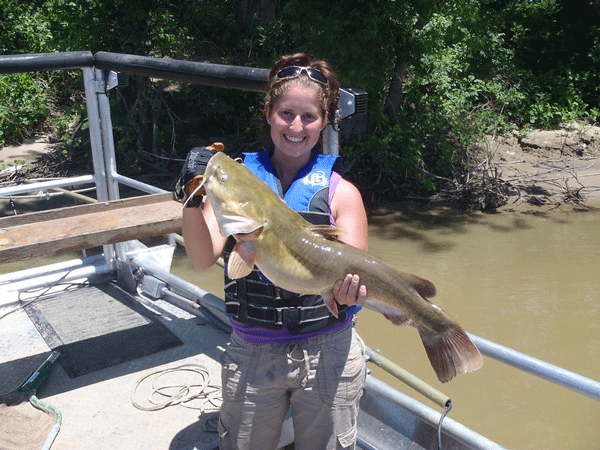
Best Missouri Catfish Fishing Techniques and Tips
To maximize your chances of success when catfish fishing in Missouri, it’s essential to familiarize yourself with effective techniques and tips. Here, we’ll share proven strategies to help you land more catfish, regardless of the species or location.
1. Choose the Right Bait
Selecting the appropriate bait is crucial when targeting catfish. For channel catfish, popular choices include prepared baits such as dip baits, punch baits, and commercially available stink baits. Chicken liver, nightcrawlers, and cut bait (pieces of fish) are also effective options.
For blue and flathead catfish, live or freshly cut bait is often the best choice. Shad, sunfish, and herring are particularly appealing to these predatory catfish. Flatheads, in particular, are known for preferring live bait.
2. Rigging Techniques
There are several catfish rigging techniques that can help improve your success rate:
-
Slip Sinker Rig: This rig is popular for its simplicity and effectiveness. It consists of a sliding sinker, a swivel, and a leader with a hook. It allows catfish to pick up the bait without feeling the weight of the sinker, increasing the chances of a successful hookset.
-
Three-Way Rig: This rig utilizes a three-way swivel to attach the mainline, a dropper line with a sinker, and a leader with a hook. It’s particularly effective in areas with strong currents, such as rivers, as it allows your bait to stay close to the bottom without getting snagged.
-
Float Rig: A float rig suspends your bait off the bottom, making it more visible to catfish and keeping it away from debris. This rig works well in shallow water or when fishing near submerged structures.
3. Fish at the Right Time
While catfish can be caught at any time of the day, they are often more active during the early morning and late evening hours. Nighttime fishing can also be productive, especially for flathead catfish, which are primarily nocturnal.
4. Target Prime Catfish Habitats
Understanding the preferred habitats of different catfish species can help you locate and target them more effectively. Channel catfish often inhabit areas with moderate to swift currents, submerged logs, rocks, and vegetation. Blue catfish prefer deep channels in large rivers and reservoirs with sandy or rocky bottoms. Flathead catfish are often found in deep pools, undercut banks, and near fallen trees or other submerged structures.
5. Pay Attention to Water Temperature
Catfish are sensitive to changes in water temperature, which can affect their feeding behavior. In the spring and fall, when water temperatures are between 50°F and 70°F, catfish tend to be more active and feed more aggressively. During the hot summer months, they may seek deeper, cooler waters during the day and move to shallower areas to feed at night.
6. Use Electronics
Modern fish-finding electronics can help you locate catfish more easily by identifying underwater structures, drop-offs, and temperature changes. By leveraging this technology, you can increase your chances of finding catfish hotspots and improve your overall fishing success.
By implementing these catfish fishing techniques and tips, you’ll be well-equipped to tackle Missouri’s diverse catfish fishing opportunities and maximize your chances of landing impressive catches.
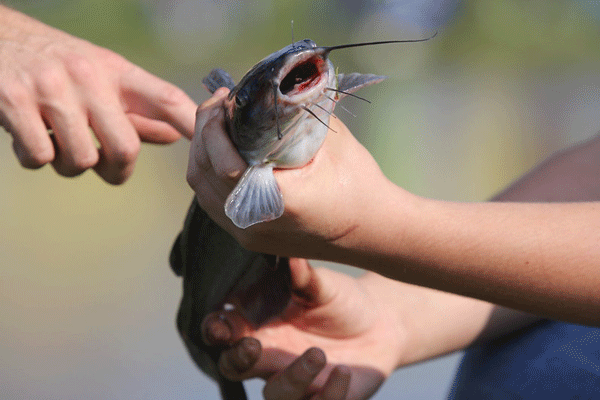
Essential Catfish Fishing Gear
Having the right gear is essential for a successful catfish fishing experience. Here, we’ll cover the necessary equipment and tackle to help you reel in impressive catfish catches in Missouri.
1. Rod and Reel
Selecting the appropriate rod and reel combination is crucial for effective catfish fishing. A medium to heavy-action rod, typically 6 to 8 feet in length, is ideal for most catfish species. For larger blue and flathead catfish, a heavy-action rod may be more suitable.
A baitcasting or spinning reel with a smooth drag system and sufficient line capacity is recommended. When targeting larger catfish, a baitcasting reel with a higher line capacity is often preferred.
2. Fishing Line
A high-quality fishing line is crucial for handling the strong fights that catfish are known for. Monofilament line with a test strength of 15 to 30 pounds is suitable for most catfish species. If you’re targeting trophy-sized blue or flathead catfish, consider using a braided line with a higher test strength to ensure you’re prepared for their powerful runs.
3. Hooks
Sharp, durable hooks are essential for secure hooksets when catfish fishing. Circle hooks, in sizes ranging from 2/0 to 8/0, are a popular choice as they often result in a solid hookset in the corner of the catfish’s mouth. Octopus hooks and J-hooks can also be effective but may require a more aggressive hookset.
4. Sinkers and Weights
Sinkers and weights are necessary for keeping your bait at the appropriate depth and maintaining contact with the bottom. Bank sinkers, egg sinkers, and no-roll sinkers are all suitable choices for catfish fishing, depending on your chosen rigging technique. Weights ranging from 1 to 4 ounces are typically sufficient, although heavier weights may be necessary in areas with strong currents or deeper waters.
5. Swivels and Leaders
High-quality swivels and leaders are essential for preventing line twists and improving the durability of your rig. Barrel swivels and three-way swivels are popular choices for catfish rigs. For leaders, a monofilament or fluorocarbon line with a test strength of 20 to 50 pounds is recommended.
6. Tackle Box
A well-organized tackle box is essential for storing and transporting your hooks, sinkers, swivels, and other catfish fishing essentials. Look for a tackle box with adjustable compartments to accommodate various tackle sizes and ensure easy access to your gear while on the water.
7. Landing Gear
Proper landing gear, such as a sturdy net or fish gripper, is crucial for safely and efficiently landing your catfish catches. A large, rubber-coated net is ideal for minimizing harm to the fish and preventing hooks from getting tangled. Fish grippers can also be useful for handling larger, heavier catfish.
8. Additional Accessories
Other essential accessories for your catfish fishing adventure include:
- Needle-nose pliers or hook-removal tools for removing hooks safely and efficiently.
- A measuring tape or ruler for measuring the length of your catches.
- A fishing hat, sunglasses, and sunscreen to protect yourself from the sun.
- A cooler or live well for keeping your catch fresh.
By equipping yourself with the essential catfish fishing gear outlined in this guide, you’ll be well-prepared to tackle Missouri’s catfish fishing opportunities and enjoy a successful and memorable angling experience.
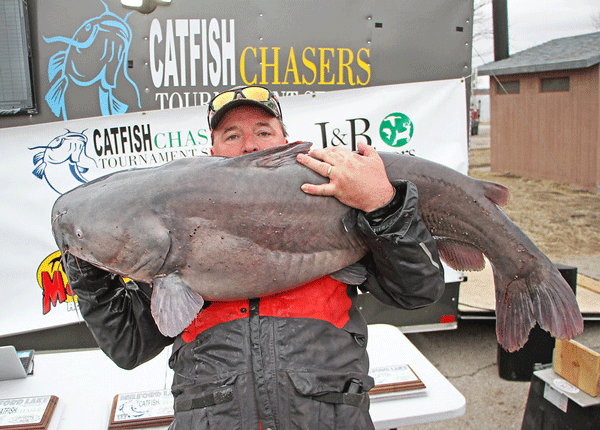
Missouri Catfish Fishing Regulations
To ensure a sustainable and enjoyable catfish fishing experience in Missouri, it’s important to be aware of and adhere to the state’s fishing regulations. These rules help maintain healthy fish populations and protect the aquatic ecosystem. Here, we’ll provide an overview of key Missouri catfish fishing regulations, but always remember to consult the latest Missouri Department of Conservation’s (MDC) fishing guide for the most up-to-date information.
1. Fishing License Requirements
Anglers aged 16 to 64 are required to possess a valid Missouri fishing license while fishing for catfish. Residents aged 65 and older are exempt from this requirement. Non-residents aged 16 and older must also obtain a valid non-resident fishing license. Fishing licenses can be purchased online, at MDC offices, or through various authorized vendors across the state.
2. Length and Daily Limits
Missouri has specific length and daily limits for catfish species to ensure their populations remain healthy:
- Channel Catfish: The daily limit is 10, with no minimum length requirement.
- Blue Catfish: The daily limit is 5, with no minimum length requirement. However, on some lakes and rivers, a 26-34 inch protected slot length limit is enforced, meaning anglers must release any blue catfish measuring 26 to 34 inches. Be sure to check local regulations for the specific body of water you are fishing.
- Flathead Catfish: The daily limit is 5, with no minimum length requirement.
Keep in mind that these limits are subject to change, and some bodies of water may have unique regulations. Always consult the MDC’s fishing guide or local conservation agents for the latest information.
3. Gear Restrictions
Missouri enforces certain gear restrictions to protect fish populations and ensure ethical fishing practices:
- It is illegal to use any form of explosives, poisons, or electrofishing devices to catch catfish.
- Anglers are limited to using a maximum of 33 hooks per line when fishing with setlines or trotlines.
- Anglers using jug lines are limited to using a maximum of 20 jugs, and each jug must be clearly labeled with the angler’s full name and address.
4. Catch and Release
Practicing catch and release is highly encouraged, especially for large catfish, which play a crucial role in maintaining healthy fish populations. When releasing catfish, handle them gently and use wet hands or a damp towel to minimize damage to their slime coat. Keep the fish in the water as much as possible, and use needle-nose pliers or a hook-removal tool to quickly and safely remove the hook.
By adhering to Missouri’s catfish fishing regulations and practicing ethical angling techniques, you can contribute to the long-term health of the state’s catfish populations and enjoy a rewarding and sustainable fishing experience.
Conclusion
Missouri offers exceptional catfish fishing opportunities, with diverse water bodies and an abundance of catfish species. By exploring top fishing locations such as Lake of the Ozarks, Mississippi River, Truman Lake, Missouri River, Table Rock Lake, and James River, anglers can experience the thrill of reeling in impressive catfish catches. To maximize your success, it’s essential to employ effective catfish fishing techniques and tips, including selecting the right bait, rigging methods, fishing at optimal times, and using electronics to locate prime catfish habitats.
Equipping yourself with the necessary gear, such as a suitable rod and reel, fishing line, hooks, sinkers, and tackle box, will ensure you’re prepared for any catfish fishing adventure. It’s crucial to be aware of and adhere to Missouri’s catfish fishing regulations, including obtaining a valid fishing license, following length and daily limits, respecting gear restrictions, and practicing catch and release when appropriate.
By following these guidelines and honing your catfish fishing skills, you’ll be well on your way to creating unforgettable angling memories in the beautiful state of Missouri.
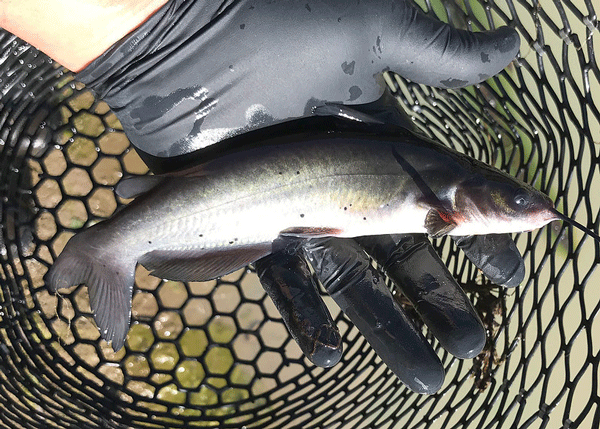
Frequently Asked Questions
Q: What catfish species can be found in Missouri?
Missouri is home to three primary catfish species: channel catfish, blue catfish, and flathead catfish. Channel catfish are the most common and widespread, while blue and flathead catfish can be found in larger rivers and reservoirs.
Q: Do I need a fishing license to fish for catfish in Missouri?
Yes, anglers aged 16 to 64 are required to possess a valid Missouri fishing license when fishing for catfish. Non-residents aged 16 and older must also obtain a valid non-resident fishing license.
Q: What are the daily limits and size restrictions for catfish in Missouri?
The daily limits for catfish in Missouri are as follows:
- Channel Catfish: 10 per day, no minimum length requirement.
- Blue Catfish: 5 per day, no minimum length requirement. However, some lakes and rivers enforce a 26-34 inch protected slot length limit.
- Flathead Catfish: 5 per day, no minimum length requirement.
Always check the latest Missouri Department of Conservation’s fishing guide for the most up-to-date information and any specific regulations for the body of water you are fishing.
Q: What are some effective baits for catfish in Missouri?
For channel catfish, popular baits include prepared baits (dip baits, punch baits, and stink baits), chicken liver, nightcrawlers, and cut bait. For blue and flathead catfish, live or freshly cut bait such as shad, sunfish, and herring are often the best choices.
Q: What are the best times to fish for catfish in Missouri?
Catfish can be caught throughout the day, but they are often more active during the early morning and late evening hours. Nighttime fishing can also be productive, especially for flathead catfish, which are primarily nocturnal.
Q: Are there any gear restrictions when fishing for catfish in Missouri?
Missouri enforces certain gear restrictions to protect fish populations and ensure ethical fishing practices. It is illegal to use explosives, poisons, or electrofishing devices to catch catfish. Anglers are limited to using a maximum of 33 hooks per line when fishing with setlines or trotlines, and those using jug lines are limited to using a maximum of 20 jugs, which must be labeled with the angler’s full name and address.
Q: What types of habitats should I target when fishing for catfish in Missouri?
Channel catfish often inhabit areas with moderate to swift currents, submerged logs, rocks, and vegetation. Blue catfish prefer deep channels in large rivers and reservoirs with sandy or rocky bottoms. Flathead catfish are often found in deep pools, undercut banks, and near fallen trees or other submerged structures.
Q: What is the best way to practice catch and release when fishing for catfish?
When releasing catfish, handle them gently using wet hands or a damp towel to minimize damage to their slime coat. Keep the fish in the water as much as possible, and use needle-nose pliers or a hook-removal tool to quickly and safely remove the hook.

